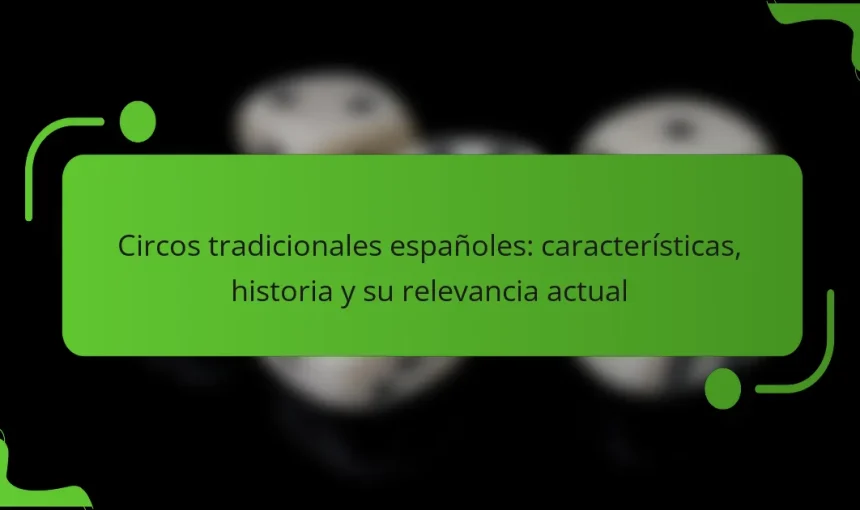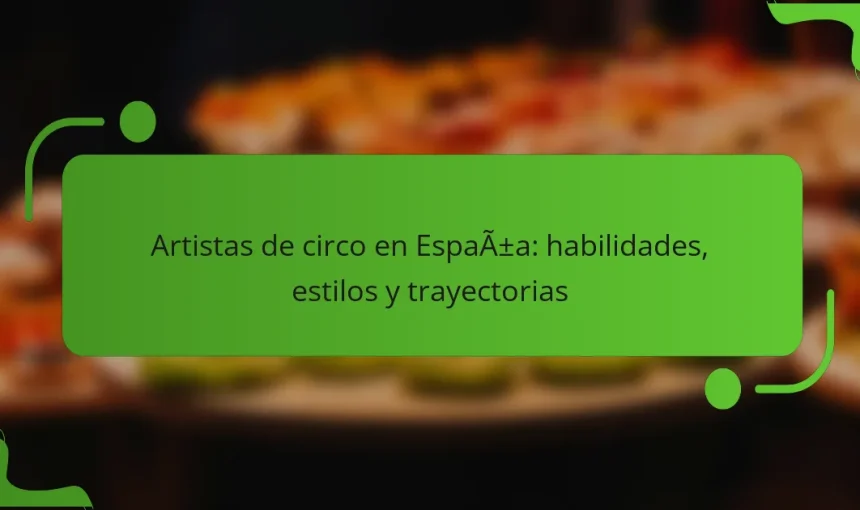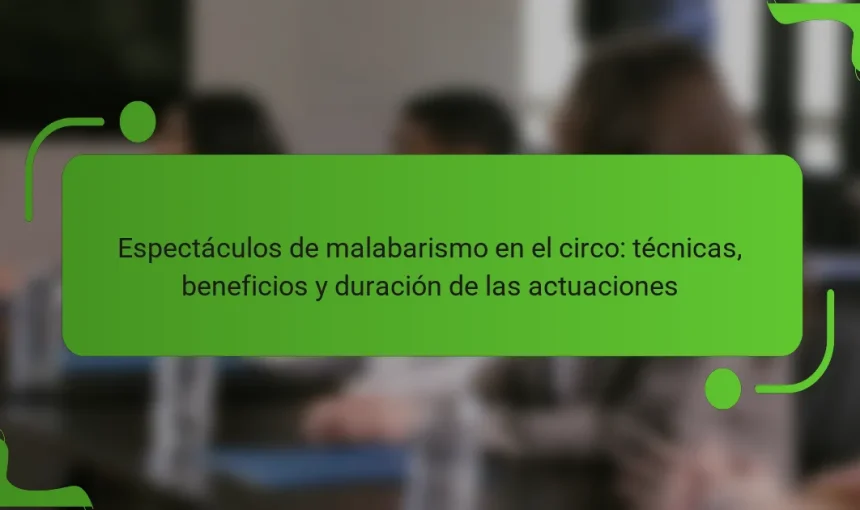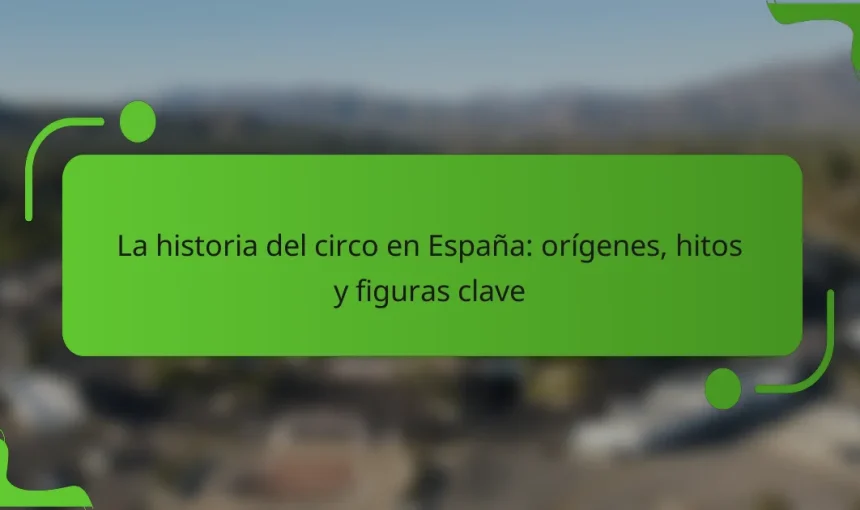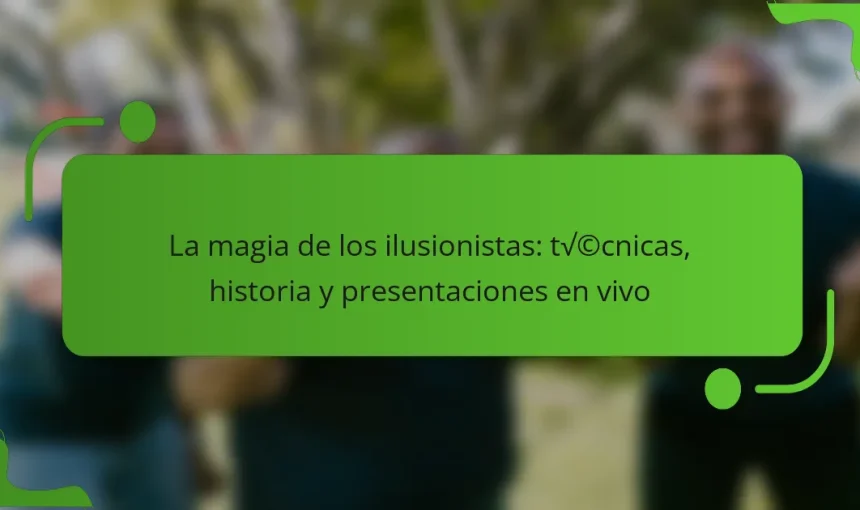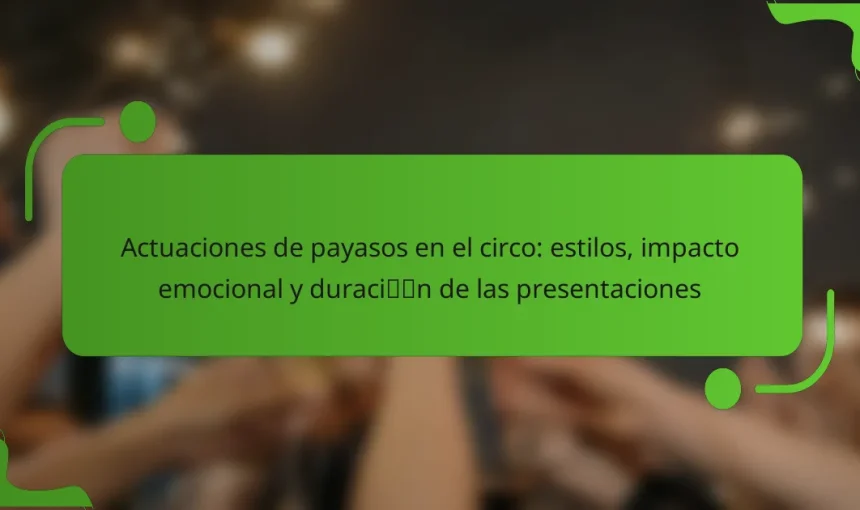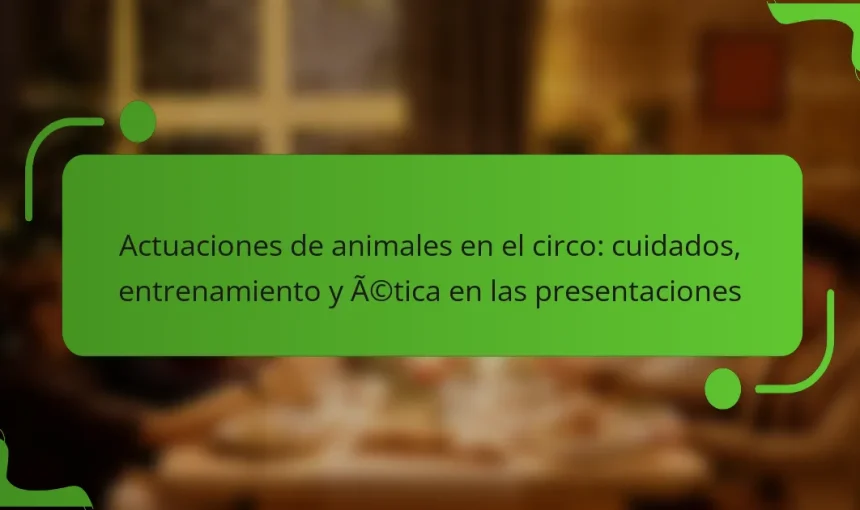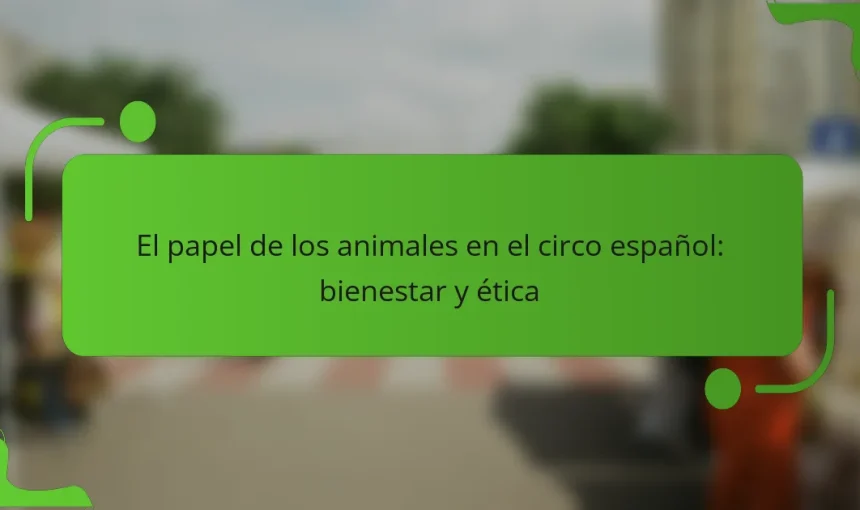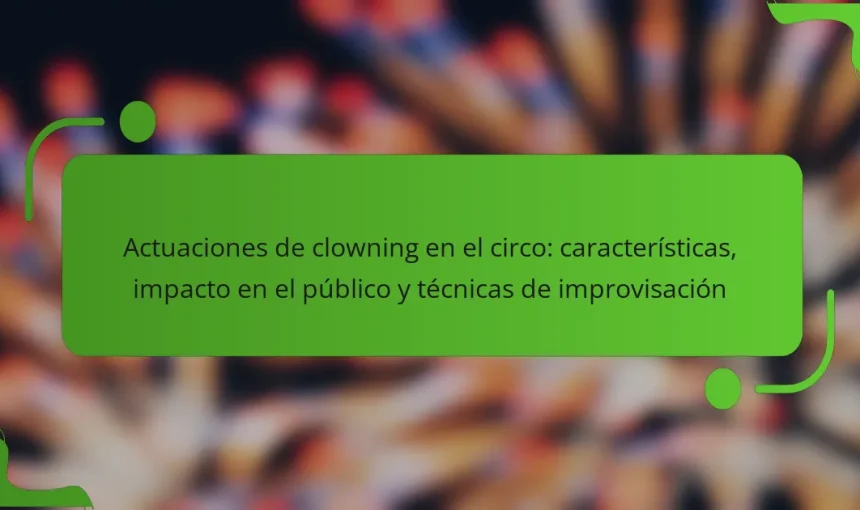Spanish traditional circuses are itinerant shows that blend acrobatics, juggling, and animal performances, playing a significant role in Spanish culture since the 19th century. Typically featuring a large tent, these circuses showcase skilled artists, known as “circenses,” who perform various acts, including contortion and magic. Recently, Spanish traditional circuses have evolved by adapting to new […]
The traditional circus in Spain is a historical form of entertainment that combines acrobatics, juggling, and animal performances, with origins dating back to the 18th century. This article explores the various types of traditional circus, including the tent circus, theater circus, and street circus, each with unique characteristics and audience engagement methods. Highlighted performances within […]
Circus artists in Spain are skilled professionals who perform entertainment shows in circuses, including acrobats, jugglers, clowns, and trapeze artists. This article explores the diverse trajectories, specialized training, and artistic contributions of these performers, highlighting their blend of traditional techniques and modern innovations. The growth of the circus sector in Spain has led to increased […]
The article focuses on circus juggling performances, which are artistic displays involving the throwing and manipulation of various objects such as balls, clubs, and rings. It outlines the essential techniques of juggling, including throwing, balancing, and manipulation, highlighting the skills required for effective performances. Additionally, the article discusses the benefits of juggling, such as improved […]
Contemporary circus in Spain is a performing art that merges acrobatics, theater, and innovative visual elements, distinguishing itself from traditional circus through its focus on narrative and artistic expression. Emerging in the 1980s, this art form gained popularity due to international influences and the establishment of festivals that promoted its growth. Current trends highlight the […]
The article explores the art of illusionists, focusing on their techniques, history, and live performances. It details various methods such as prestidigitation, escapism, and mentalism, which illusionists use to create visual illusions and engage audiences. Historical records indicate that magic has been practiced since ancient Egypt, evolving into a modern discipline that combines art, skill, […]
The article focuses on clown performances in the circus, which are comedic presentations designed to entertain audiences through humor, mime, and slapstick. It explores various elements of these performances, including juggling, acrobatics, and comedic sketches, highlighting the essential role clowns play in creating a joyful atmosphere. Additionally, the article delves into the historical evolution of […]
The article focuses on animals in circuses, specifically examining their care, training methods, and the ethical implications surrounding their use. It highlights various species commonly featured, such as lions, tigers, elephants, and horses, and discusses training techniques like positive reinforcement. The article addresses concerns regarding animal welfare, including the conditions in which these animals live […]
The article examines the role of animals in Spanish circuses, focusing on their use for entertainment through tricks and performances, which has sparked ethical debates regarding animal welfare. It highlights the presence of traditional circus animals such as lions, tigers, and elephants, and discusses the legal implications surrounding their treatment, including Spain’s Animal Protection Law […]
Clowning performances in the circus are comedic acts carried out by clowns, characterized by physical humor, improvisation, and acting skills. These performances utilize colorful costumes and distinctive makeup to engage the audience, often involving direct interaction to enhance the comedic experience. Key techniques of clowning include visual gags and absurd situations, aiming to elicit laughter […]
